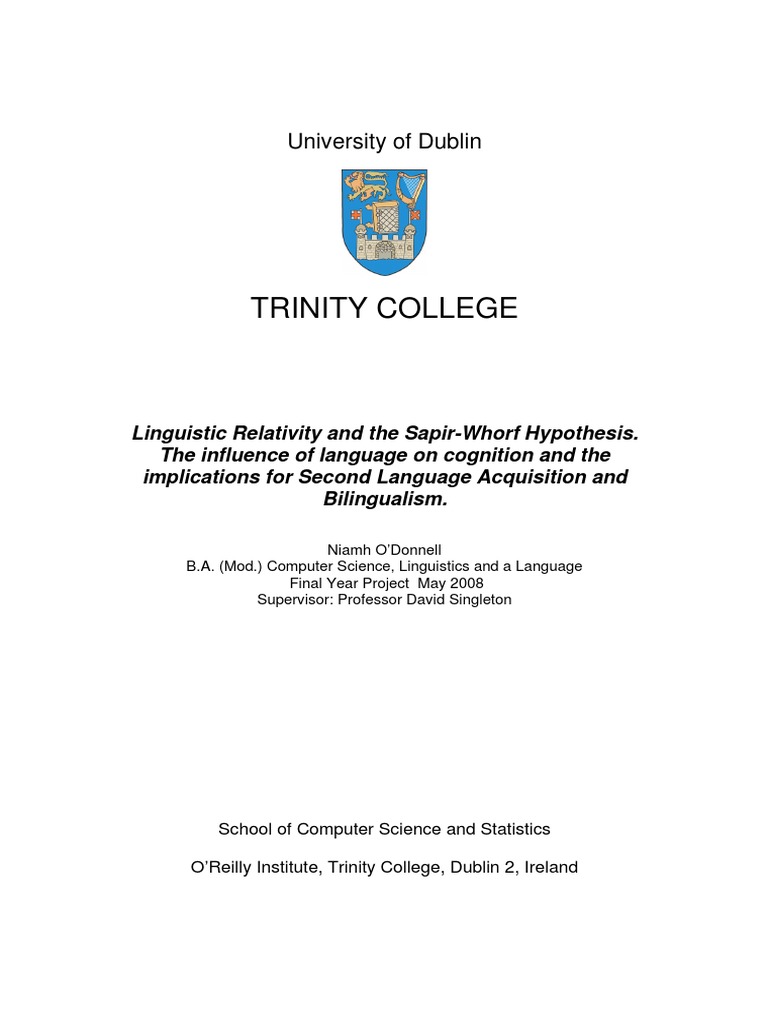The Sapir-Whorf Hypothesis, also known as linguistic relativity, delves into the intricate relationship between language and thought. This theory posits that the structure and vocabulary of a language influence its speakers’ worldview and cognition. It invites us to examine how our language shapes our perceptions and, consequently, our interactions with the world around us. The hypothesis, originating from the pioneering works of linguists Edward Sapir and Benjamin Lee Whorf in the early 20th century, has profound implications across multiple disciplines, including anthropology, psychology, and linguistics.
At its core, the Sapir-Whorf Hypothesis operates on two primary premises: linguistic determinism and linguistic relativity. Linguistic determinism maintains a more extreme viewpoint, suggesting that language confines thought and renders certain concepts ungraspable without corresponding terminology. For example, if a language lacks a word for a specific emotion, speakers may struggle to articulate or even comprehend that emotion fully. In contrast, linguistic relativity posits a more nuanced understanding, acknowledging that language influences thinking but does not strictly limit it. Therefore, speakers of different languages may perceive and think about the world in distinctly varied ways due to the particular linguistic structures they employ.
Many intriguing studies have been conducted to explore these ideas further. One compelling example involves color terminology. Research reveals that speakers of languages with fewer color terms may perceive colors differently compared to those whose languages have a rich palette of descriptors. For instance, Russian speakers, who make a clear distinction between light blue (‘голубой’) and dark blue (‘синий’), demonstrate an enhanced ability to differentiate shades of blue compared to English speakers. This finding suggests that linguistic differences can indeed lead to variances in cognitive perception—one of the many ways the Sapir-Whorf Hypothesis manifests in everyday life.
Moreover, the implications of linguistic relativity extend beyond mere color perception. Consider the ways different cultures understand time. In English, time is often conceptualized linearly—past, present, and future in a straight line. Conversely, the Aymara people of the Andes perceive time differently; they view the past as being in front of them and the future behind, stressing an entirely different relationship to temporal events. This difference reveals how language not only reflects cultural beliefs but also shapes the cognitive frameworks of its speakers. Consequently, the Sapir-Whorf Hypothesis encourages us to reflect on our own linguistic constructs and their potential limitations.
Cultural variances further reveal the depth of linguistic relativity. Take, for instance, how various languages encode spatial relationships. In English, we often use egocentric coordinates, such as “left” and “right.” However, Guugu Yimithirr, an Aboriginal language spoken in Australia, employs cardinal directions exclusively. Speakers must orient themselves in relation to the cardinal points (north, south, east, west) rather than relative to their bodies. This nuance significantly affects the way time and space are conceptualized, compelling speakers to maintain a strong awareness of their geographic surroundings at all times. Such salient distinctions prompt us to reevaluate our own conceptual frameworks and cultivated biases that might remain unexamined.
Philosophers and cognitive scientists frequently delve into these concepts to uncover the underlying mechanics of human thought. Theories within neuroscience have began to align with the Sapir-Whorf Hypothesis, suggesting that language and cognition are intricately interwoven. Brain studies and linguistic experiments indicate that learning new languages can enhance cognitive flexibility—a capacity to adapt and tackle novel problems. This perspective posits that exposure to diverse linguistic systems widens cognitive horizons, providing a refreshing shift in perspective that cultivates curiosity.
In a world increasingly interconnected through globalization, synthesizing various linguistic and cultural paradigms is imperative. With rising concerns over climate change, the necessity to foster an understanding of different environmental perspectives becomes even clearer. Language plays a monumental role in cultural attitudes towards sustainability and conservation. For instance, some indigenous cultures possess an intrinsic bond with nature, often reflected in their linguistic frameworks. This harmony emphasizes stewardship over exploitation and can inspire a shift in how modern societies conceptualize their relationship with the environment.
Thus, the Sapir-Whorf Hypothesis invites us to pursue an awareness of our linguistic biases and encourages curiosity toward diverse cognitive frameworks. Examine how language may color your perspectives on pressing issues such as climate change or sustainable practices. How might learning a new language or interacting with speakers from different cultural backgrounds facilitate a transformation in your understanding of important global challenges? The exploration of linguistic relativity presents an opportunity not only to expand our cognitive horizons but also to foster a collective consciousness that is more attuned to the nuances of our world.
In conclusion, the Sapir-Whorf Hypothesis is not merely an academic curiosity. It promises a profound shift in our understanding of human thought, language, and culture. By recognizing the extent to which language shapes our perceptions and experiences, we are empowered to challenge our innate biases and cultivate a more inclusive, curious approach to the diverse world we inhabit. Embracing the principles of linguistic relativity could very well be the key to unlocking new avenues of understanding in addressing global challenges, fostering dialogue, and building a more harmonious world.
